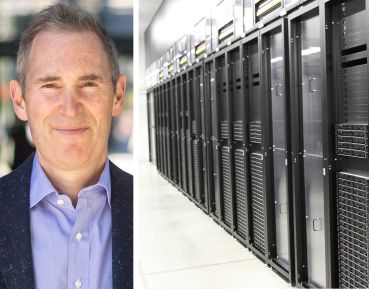Debunking Broadband’s Biggest Myths With Roslyn Layton
By Jotham Sederstrom July 23, 2013 8:00 am
reprintsRoslyn Layton, a PhD fellow studying broadband at the Center for Communication, Media and Information Studies at Aalborg University and working for Strand Consult, debunks the most common myths about American broadband. After the jump, excerpts from Wired City’s interview with Ms. Layton last week.
 Wired City: Are we really paying more for slower speeds?
Wired City: Are we really paying more for slower speeds?
Ms. Layton: Absolutely not—but let’s understand this in terms of two types of customers, businesses and individuals. To Wall Street trading firms, milliseconds can mean millions of dollars. They may pay thousand dollars per month for broadband, but that cost pales in comparison to the value they realize from their networks.
About 80 percent of Americans live in or near a city, so broadband is more cost effective to deploy where people live more closely together. People in rural areas may have a higher monthly broadband price, but they pay much less in housing costs.
When we look at consumers, imagine how much it would cost to purchase individually all the content that consumed on the internet today: how many music CDs, movie tickets, books, magazines would one have to buy? Certainly many more times than the monthly average broadband subscription price.
What people spend on broadband today is equivalent to their daily trip to Starbucks.
Are profits from these companies really going into shareholders’ pockets instead of being put towards the betterment of their services?
The long term economics of the telecommunications industry are challenging. The revenue from voice and SMS is declining as people switch to VoIP and free messaging. It is unclear whether revenue from data will pick up the slack. AT&T closed 2012 with a net profit margin of 5.7 percent. Naturally this number will fluctuate; in 2011 it was 3.11% and in 2010 it was 15.98 percent, and there are other metrics to consider, but it’s hard to make a case that telecom companies are fleecing their customers when one looks at the profit margins and the fact that investors have many other choices for industries which have higher returns such as software, aerospace, chemicals, pharmaceuticals and so on.
Perhaps most telling is the fact that internet companies whose business are built on top of broadband infrastructure (Google, Facebook, Netflix (NFLX) etc) are generally much more profitable than the network providers themselves.
How so?
Services like Skype or WhatsApp are evolving, and people are using them instead of buying services from a carrier. If I buy Netflix, I don’t need Time Warner Cable. I can use Skype to make long distance and don’t need A T&T. Instead of texting I can message people through Facebook.
Also, a network can expire just like a carton of milk. There is a lot of pressure for carriers to invest because of competition and technology. American carriers account for one quarter of the world’s investment in broadband infrastructure. They invest about 13 percent of sales back into infrastructure, significantly higher than other equipment industries. This amounts to $70 billion or more per year, over $1 trillion since the commercialization of the Internet in 1996.
Essentially, if you want a good investment, you can make much more investing in IT or other industries. Their profitability isn’t unusually high. The long term economics of telecom aren’t good.
Does any one company have a monopoly on broadband?
Absolutely not. The Organization for Economic Co-operation and Development ranks the USA No. 3 in the world for competition between carriers of different types of technology. Americans can access broadband in many ways: cable, DSL, fiber, mobile, satellite, and Wi-Fi. Plus broadband providers also face competition from communication technologies on top of their networks, the so called Over the Top (OTT) technologies. These are VoIP services such as Skype and Rebtel; messaging services such as Facebook Messenger and Whats App.
Go to the National Broadband Map http://www.broadbandmap.gov/, enter your zip code, and see how many providers are available to you. In practice you will find at least four providers, very often more. And, in the broadband market, the competition is for the type of technology, not from the companies.
Is it true that nearly a third of Americans don’t have access to Internet?
Yes, it’s true that a third of Americans don’t have broadband, and the main reason they cite is that they are not interested. People don’t way to pay for something they don’t use. But let’s look more closely at where this number comes from: The U.S. Department of Commerce issued a report in 2010 called “Exploring the Digital Nation: Computer and Internet Use at Home.” They surveyed 55,000 households, which is to be representative of America.
The number one reason why one-third of Americans don’t have Internet is not because they can’t afford it, but because they don’t want it (47 percent). The issues of affordability (24 percent) and an inadequate computer (15 percent) affect fewer Americans. The largest group of people who don’t have internet access claim that the Internet has no value for them—not because they can’t afford it or because it is not accessible.
So what’s the real issue here?
There remains a subset of Americans who lack basic English and literacy skills, and they will likely never subscribe to broadband until they can read English, or Spanish for that matter. So there is still work to be done to teach English. It is the first step in digital literacy.
With the rise of inexpensive smartphones and tablets, we can see that the remaining unconnected Americans will have a better chance to get Internet access. In 2013 more than half of all Americans have a smartphone.
In developed countries, some 10-15 percent of the adult population does not get online. Similarly to the US, there are people who are just not interested in the Internet. They may like to do other things with their time: enjoy the outdoors, work with their hands, or spend time with family and friends offline. It may be that they may shun computers. Perhaps they feel alienated by technology. However, with mobile devices, people who have never been online, get online.


